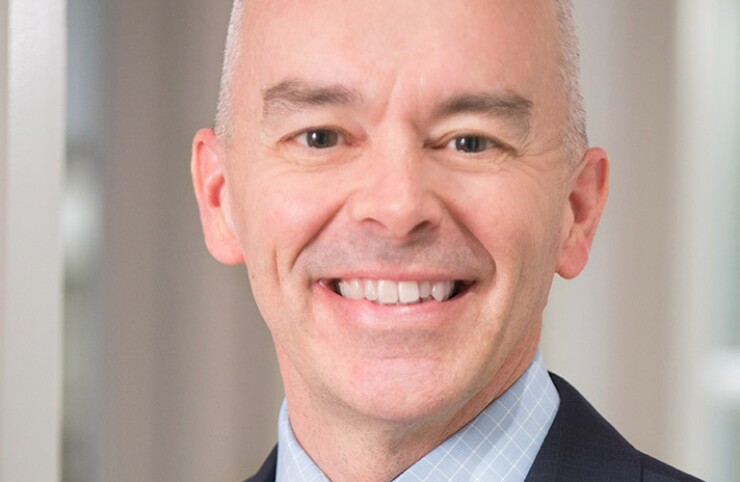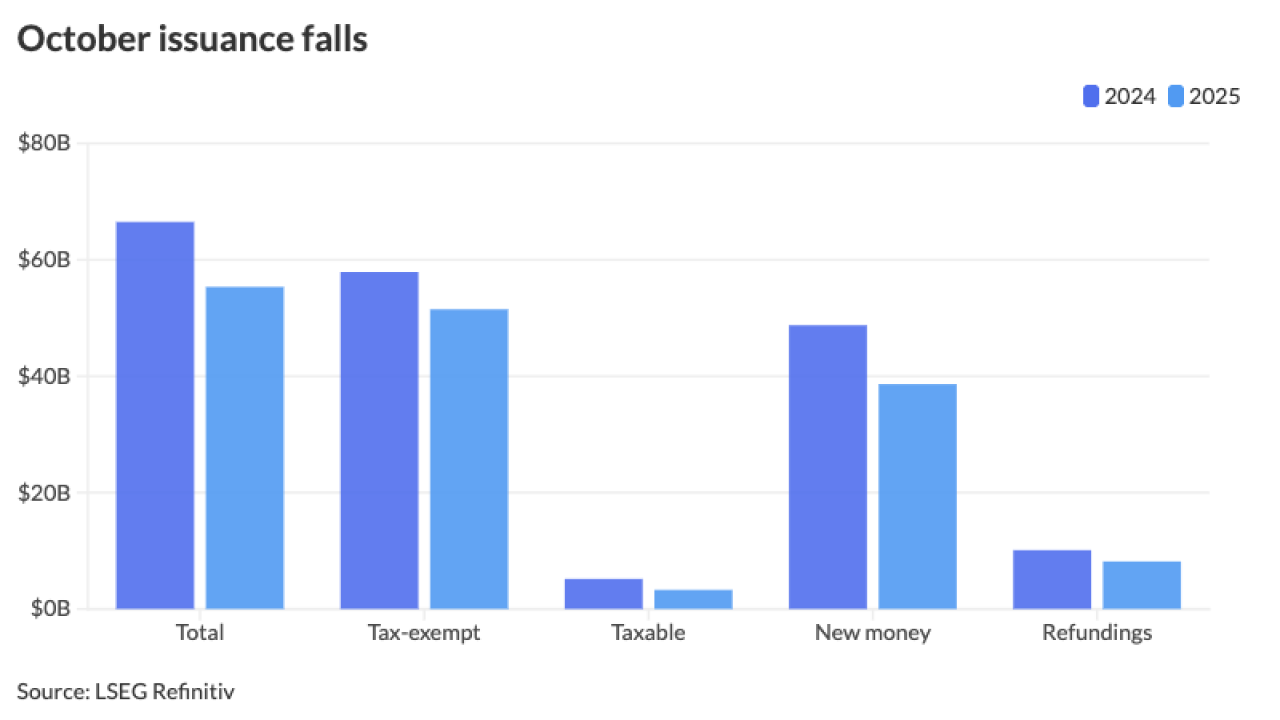
With the Federal Open Market Committee
"It's going to be interesting," said
Given the lingering uncertainty, he said, the dot plot will likely remain the same as in March, with the Fed likely still projecting two rate cuts this year, although the timing could change depending on data.
"It wouldn't surprise me to potentially see both those cuts this year or no cuts this year and both those cuts next year," Rehling said, noting the market is pricing in two to two and a half rate cuts this year, while WFII expects one.
The firm expects the "Fed to be just a little bit more data dependent, as they said, and just a little bit more patient than the market expects overall," he said.
The key takeaway, he said, is there won't be a lot of rate reductions. If the Fed makes a lot of cuts, "it probably means the economy, and more importantly the labor markets, have really deteriorated," Rehling noted.
Wells Fargo Investment Institute President Darrell Cronk noted, "the calendar is squeezing us very quick," with June and July meetings off the table for likely cuts, leaving the September, November and December meetings as live ones.
"If markets are right" pricing in two cuts, that doesn't give the Fed much time, he said. "It's just tough right now."
Adding to the Fed's issues, Chair Jerome Powell's term ends in 2026, and he likely will not get another, Cronk said. "So you should not expect them to make big, outlandish moves or edgy moves probably in that time frame."
While higher inflation is a "great concern," he said, the economy "remains resilient through the first two quarters of the year, even with what will be some pretty wild trade induced swings in GDP data."
"We are starting to see kind of some slowing at the margins," Cronk said, and he expects "a soft patch" in the middle of the year "for both the economy and the markets, but the economy will still power through and not end up with a recession."
While this meeting is out,

In time, he said, the Fed will get "some clarity, maybe not complete clarity, but I think enough clarity for them to set a path on rates, and I think the path is going to be lower."
The Fed maintains "the current rate is restrictive," Pzegeo said, "and I think the intention is to normalize it, but obviously trade policy holds that up."
Trade policy alone wouldn't be so bad, he said, "but the
Tariffs, and where they land, have "a lot of implications for inflation and growth," Pzegeo said.
While he expects two cuts this year, "there's a cloud of uncertainty around where we are, so, it could be one, it could be three, could be zero. You don't really, don't know."
As for the SEP, Pzegeo noted, in the last dot plot there was "a pretty close split between those who expected two or more and those who expected less than two. So there's a pretty fine line between being, I think two or one, but I would say our central expectation right now is still two."
The
But don't expect any insight from the Powell press conference, he said. "Expect very little. I think
Geopolitical events may get a mention in the statement or press conference, Pzegeo said.
The FOMC will stay on hold indefinitely, said BNP Paribas Chief U.S. Economist James Egelhof, and "will pencil one rate cut into the Summary of Economic Projections, but it is a close call between one and none."
While the next live meeting will be "in October, absent a large data surprise or nonlinear event," he said, BNP doesn't expect any cuts this year as the Fed "manages the competing nonlinear risks of a serious economic downturn and of entrenchment of high inflation."
Expect no change in rates, with the Fed stressing "the outlook for the U.S. economy remains uncertain," Wells Fargo Chief Economist Jay Bryson and senior economists Sarah House and Michael Pugliese said in a note.
"The median dot for 2025 looks like a close call, but we lean toward it showing only 25 bps of policy easing this year, down from 50 bps at the March meeting," they said.
Despite President Donald Trump calling for immediate sharp rate cuts, David Kelly, chief global strategist at J.P. Morgan Asset Management, offered four reasons why this is unlikely.
First, tariff impacts will "become more obvious in the months ahead, with consumption deflator headline inflation rising to 3.5% year-over year by the fourth quarter — well above the Fed's 2% target."
Also, the Fed won't move until the path of fiscal policy clears, Kelly added. "Moreover, if the bill eventually passed includes major fiscal stimulus for 2025 and 2026, it could boost inflation into 2026, undermining the argument for monetary ease."
Next, legal immigration is declining, he said. "This could intensify a squeeze on labor supply thereby boosting wage growth and inflation pressures even as it restrains any rise in the unemployment rate."
Finally, with equities rebounding, "the Fed won't want to further boost asset prices."
Labor market weakness hasn't been enough to support a June rate cut, said Brian Rose, senior U.S. economist a, UBS Global Wealth Management.
"We expect to see further softening in the second half of 2025 as tariffs and other policy measures weigh more heavily on the economy, leading the Fed to start cutting rates in September," he said.
Ken Mahoney, CEO at Mahoney Asset Management, supports the Fed's inaction. "Any rash move would most likely spook the market, and some were calling for rate cuts which we are not sure they are aware of, would send us into a phase 2 deeper bear market unless that is what they are wishing for."
And Powell deserves credit "for not really reacting to the bleak times in April and waiting it out, amidst pressure from Trump," he said. "The new issue now may be yields spiking, as we saw the market fall after the
The situation in the Middle East "is a significant risk for markets and the economy alike since it can push inflation much higher via crude oil and deter central banks from reducing rates," noted José Torres, senior economist at Interactive Brokers.
Morgan Stanley analysts expect no change in rates or balance sheet reductions. They expect the SEP to suggest "slower growth, firmer inflation and a still-low unemployment rate," but still project two rate cuts this year.
Powell, they said, will emphasize policy is well positioned and the Fed will remain patient.
Morgan Stanley sees no rate cuts before next year.
FHN Financial Chief Economist Chris Low doesn't expect the SEP forecasts to change much, as inflation has been softer since March.
"Fed messaging is likely to get more optimistic about cuts, along the lines of Chris Waller's recent speculation that the Fed can cut rates as long as tariffs settle close to current levels," he said.
Daniela Sabin Hathorn, senior market analyst at Capital.com, sees the dot plot cut to one rate cut this year.





